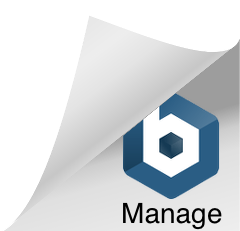In a dynamic world where fear, uncertainty, and preservation of the status quo govern the actions of risk averse companies, a new type of company is encroaching. These insurgent companies are undaunted by risk, adaptation, and change. They thrive on the opportunity to innovate and reinvent solutions to existing problems…and they’re likely not going away any time soon. In a generation of rapid change and development these companies are increasingly better positioned to take advantage of divergent opportunities. How? They know how to cultivate and apply creativity.
Creativity is merely a temptress to a half-hearted company. Encouraging people to “be creative” without providing them the tools to act autonomously, collaborate, and approach problems from a different angle will yield uninspired results. Why? True creativity is generated through collaboration, connection, happiness, and personal contentment – not duress, angst and strife. Without full commitment to enhancing soft-skills, collaboration, and divergent thinking, creativity will continue to provide illusive results.
So what can you do to unleash creativity?
1. Enable individual inspiration: Inspiration and innovation isn’t held within a secular group of the organization – it’s ubiquitous and unilateral. Just like decision making and problem solving are delegated to the team members, creativity and the opportunity to make processes more effective/efficient goes too.
- Empower individuals: To effectively enable inspiration, as evidenced by Zappos, four elements are required: happy and motivated members, autonomous organizational roles, clear and internalized organizational strategic objectives, and the ability to collaborate with team members.
- Appreciating differences: Individual inspiration will be a unique derivative of personal experiences, environmental factors, and continuous learning where no two ideas are entirely alike. These differences will make both individual inspiration and collaboration incredibly effective.
2. Collaborate, Collaborate, Collaborate: Collaboration is a perpetual catalyst and gut-check to individual creativity, working both as a patron and respectable critic. Collaboration multiplies the effectiveness of individual creativity by tapping into team members’ expertise, understanding, risk assessment, and personal experiences.
- Two heads are better than one: Working together to identify problems, solutions, secondary impacts, long-term consequences, and strategic viability will exponentially increase team intelligence in making informed decisions. Sharing experiences, insights, suspicions, and ideas provides the basis for review and assessment between team members.
- Strength the team environment: As evidenced in Pixar, collaboration has the opportunity to deepen bonds, empathy, and respect between team members and further cultivate creativity. Although recruiting the right people for the job will be important, creating a “fail safe” environment and continually encouraging collaboration in problem solving will be even more so. A cognitive dissidence issue could arise if people fail to collaborate, revise their approaches, and be open to peers’ feedback. Strong interpersonal skills will not only be required for individuals to effectively collaborate; it will be fundamental to their role.
3. Encourage Divergent Thinking: Divergent thinking is what brings this collaboration and creativity into reach within organizational resource constraints.
- What is divergent thinking: In contrast to convergent thinking (belief in one “correct” answer derived from a specific set of logical steps), divergent thinking identifies many possible answers then evaluates them for fit. Divergent thinking is founded on the spontaneous and free flowing idea generation where many possible solutions are generated in a short time, and unexpected connections are drawn.
- Why encourage it: Divergent thinking enables both individual and shared creativity while still acknowledging and incorporating resource scarcity, performance requirements, and shareholder expectations into account. Through divergent thinking, creativity isn’t a blank canvas (or one with predetermined guidelines), but a brainstorming sessions where expertise, gut instinct, awareness and a heap of interpersonal skills provide the adaptive baselines for evaluation.
- Overcoming the barriers: For many adults, divergent thinking is no longer natural. As mentioned by Sir Ken Robinson, public education is built around convergent thinking. In many cases, six-year olds have stronger divergent thinking skills than their parents. But divergent thinking provides the key to unleashing creativity within a company, without becoming mired in indecision, waiting and waiting for inspiration, dislocation from company vision, and discoordination between team members. Perhaps additional training and practice sessions could be helpful to transition away from the “one correct answer” approach.
Each of these items could be unpacked in substantially greater detail and examples (and perhaps will be future research topics here); however, it’s important to see from a big-picture view how these three critical facets of creativity can be implemented into adaptive organizations. Once individuals are empowered to unleash their own internal creativity, encouraged to collaborate with their peers, and utilize divergent thinking techniques to generate and evaluate solutions, the organizational potential is truly unlimited. How does your organization rate in each of these elements?

